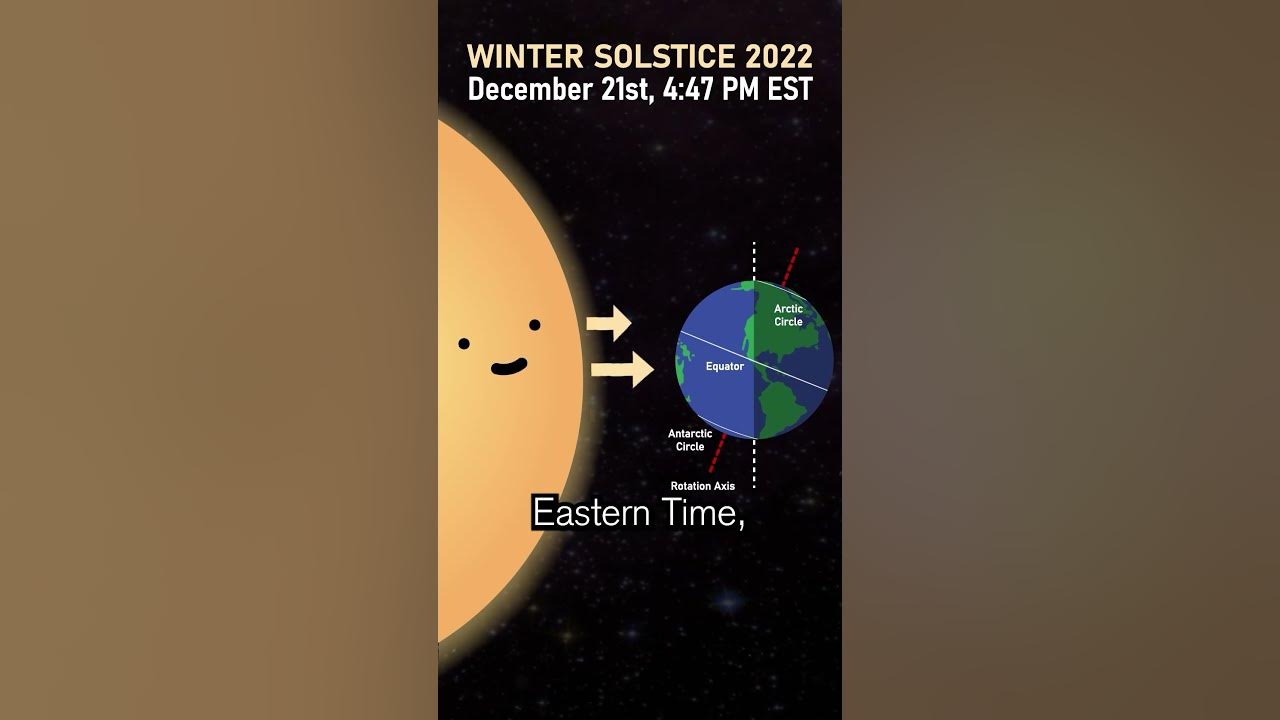


As the winter solstice approaches on December 21st, the Northern Hemisphere will experience the shortest day and longest night of the year. This natural phenomenon has captivated people for centuries, with ancient traditions and festivals taking place around the world. Through science, we can understand why this occurs and how it affects different regions of the world differently.
The Winter Solstice: A Cosmic and Cultural Moment
The winter solstice, occurring annually around December 21st or 22nd in the Northern Hemisphere, marks the shortest day and longest night of the year. This celestial event has inspired human fascination for centuries, its celestial significance and cultural implications intertwined.
Background
The winter solstice occurs when the Earth's axis tilts away from the sun to its maximum, resulting in the Northern Hemisphere experiencing less sunlight during a 24-hour period. The exact timing of the solstice varies slightly depending on the year.
The word "solstice" derives from the Latin words "sol" (sun) and "sistere" (to stand still), as the sun appears to pause or stand still in the sky at this time. This astronomical phenomenon has been recognized and celebrated by cultures around the globe since ancient times.
Cultural Traditions
Scientific Explanation
The winter solstice is a result of the Earth's tilt on its axis relative to its orbit around the sun. During this time, the Northern Hemisphere is tilted away from the sun, causing less sunlight to reach the region. Consequently, the days are shorter, and the nights are longer.
Impacts of Winter Solstice
Top 5 FAQs
1. When is the next winter solstice? A: December 21st or 22nd, 2023
2. What is the significance of the winter solstice? A: It marks the shortest day and longest night of the year in the Northern Hemisphere.
3. Why does the winter solstice occur? A: Due to the Earth's tilt on its axis relative to its orbit around the sun.
4. What are some ancient traditions associated with the winter solstice? A: Saturnalia, Yule, and other festivals honoring the return of the sun.
5. How does the winter solstice affect people? A: It can impact weather patterns, mood, sleep, and hormone levels.

On the birth anniversary of Dr. APJ Abdul Kalam, the ‘Missile Man’ of India, tributes pour in on social media celebrating his life, vision and impact. A visionary scientist, inspiring leader and true patriot, Dr. Kalam's humility, compassion and constant interaction with students continue to inspire generations. His tireless efforts in defense, science and youth empowerment have strengthened India's path towards self-reliance and his legacy continues to motivate young minds to dream big and work hard for the nation.

Recent studies have found that extreme heat, particularly when combined with high humidity, can have a significant impact on mental health. A study in India showed that when wet bulb temperature exceeded 27°C, the probability of reporting severe depression increased by 0.5%, even when the temperature was slightly lower. This finding is consistent with global reviews that have linked high temperatures to mood disorders, increased hospital admissions for psychiatric conditions, and even elevated suicide risk. The Lancet has also published evidence that rising temperatures worldwide are a growing threat to emotional and cognitive health.

In a meeting with university officials in Udaipur, Rajasthan Governor Hari Bhau Bagde stressed the importance of incorporating India's ancient knowledge traditions into academic research. He highlighted the deep repository of knowledge in India since ancient times and urged scholars and scientists to draw upon this tradition in their work. Bagde also suggested making ancient texts available in university libraries for study and research purposes, in order to shape the intellectual abilities and love for the nation among the younger generation.

John Clarke, Michel H. Devoret, and John M. Martinis have been awarded the 2025 Nobel Prize in Physics for their pioneering research into quantum mechanical tunnelling. Their discovery has opened new possibilities for quantum technologies, and will be formally presented on December 10, the anniversary of Alfred Nobel's death. This announcement follows the tradition of recognizing transformative contributions to science, and the award carries a prestigious prize of 11 million Swedish kronor.

The US-Japanese trio of Mary E Brunkow, Fred Ramsdell, and Shimon Sakaguchi have won the 2025 Nobel Prize in physiology or medicine “for their discoveries concerning peripheral immune tolerance". Through their research, they have shown how the immune system is kept in check and why serious autoimmune diseases do not affect everyone. Sakaguchi found a new class of T cells, while Brunkow and Ramsdell discovered the explanation behind a specific mouse strain's vulnerability to autoimmune diseases. Together, they have significantly advanced our understanding of immunology and autoimmune diseases.

Indian astronaut Shubhanshu Shukla, who recently completed a 20-day space mission, shared his insights and experiences at the convocation ceremony of Dr. APJ Abdul Kalam Technical University. He highlighted the importance of patience, focus, and the inevitability of change in achieving success, and urged the graduating class to actively contribute to shaping a fearless and ambitious India.

The Regional Meteorological Centre (RMC) in Chennai has issued a weather alert for parts of Tamil Nadu, with thunderstorms and light to moderate rainfall expected on Saturday. The alert was issued due to the strengthening of a cyclonic circulation in the Bay of Bengal, which is likely to intensify and form a low-pressure area. The system is expected to affect Tamil Nadu, Puducherry, and Karaikal, with some areas experiencing heavy rainfall and gusty winds. The public is advised to stay updated and take precautions, especially in hilly and western districts.

As a step towards advancing India's deep-sea research capabilities, the Union Science Minister announced a landmark contract with the International Seabed Authority to conduct mineral exploration in the Indian Ocean for the next 15 years. This move will not only help India in expanding its scientific knowledge about the deep sea but also has the potential to strengthen its position as a leading player in the international seabed mining industry.

President Trump has signed a proclamation that makes significant changes to the H-1B visa program. These changes include a new $100,000 fee for employers to sponsor H-1B workers entering the US, as well as higher wage levels and priority for senior, high-paying positions. While workers currently inside the US on valid H-1B status are not directly affected, anyone traveling abroad and seeking re-entry must comply with the new requirements. The lasting impact on the flow of talent, technology, and jobs between India and the US remains uncertain.

On September 7, 2025, a total lunar eclipse, known as a "Blood Moon," was visible to sky-watchers across Europe, Africa, Asia, and Australia. This event, which lasted from 8:58 pm to 2:25 am in India, is the longest total lunar eclipse since 2022 and only the second clearly visible Blood Moon in India since 2018. The Moon appeared red due to the Earth's atmosphere bending sunlight and filtering out blue light, providing ideal viewing conditions for Indian observers in the late evening and early hours of September 8.